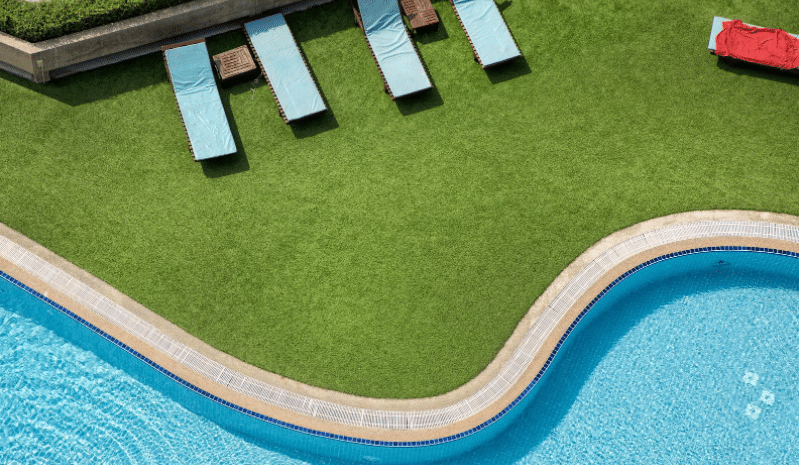Install Artificial Grass Around The Pool With These Proven Methods In San Diego

It’s Difficult To Keep Natural Grass Growing
Natural grass is lovely, but it’s difficult to keep up with. Not only do you have to keep cutting it, but you also have to keep watering it. To maintain it neat, you must trim it around the edges on a regular basis. When it rains, puddles, muck, and dirt form. Ticks, fleas, and mosquitoes can all be found there. In addition, your pool’s chlorine and chemicals can harm it.
What about the swimming pool? Walking on natural grass collects mud, dirt, weeds, and grass blades, which subsequently make their way into the pool. Between the trims, the maintenance, and the cost, it’s not ideal.
Artificial Grass Has A Lot Of Advantages
Artificial grass, on the other hand, always maintains a tidy appearance. It never needs to be chopped or trimmed, and it doesn’t produce dirt or puddles. The upkeep is simple and, even better, it is everlasting. You won’t have to be concerned about grass blades getting into the pool. Artificial turf does not support the growth of bugs, so you won’t have to worry about them, and it also looks and feels like natural grass. It’s a fantastic option.
Artificial Grass Around The Pool: How To Plan
First, decide where artificial grass will be used. How far do you want your lawn to be from the pool? Do you want your organic lines to blend in with your surroundings? Is there anything else in your backyard that you’d like to wrap the grass around? Installing a tile border around the pool is recommended; even artificial grass should not extend all the way to the edge.
After that, if you have grass, you’ll need to remove it up to 3 inches below the soil’s surface. To allow for drainage, tamp it down and drill drainage holes and add a subbase. Water damage can be avoided by installing drainage systems.
You must select the appropriate sub-base. Weed membrane, silicone, granite, and limestone chippings are examples of sub-bases. The sub-base enables drainage while remaining impervious to water. After that, the synthetic grass may be rolled out and secured.
Conclusion
It’s usually a good idea to hire a pro to install it because it might be difficult to do right. Professionals can lay down grass that will last for at least 20 years. Request a quote from Artificial Grass Pros today!